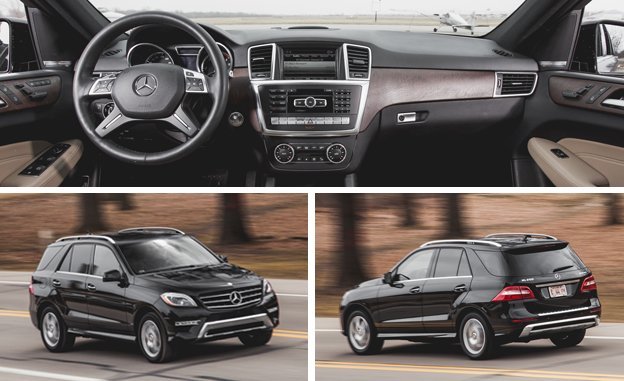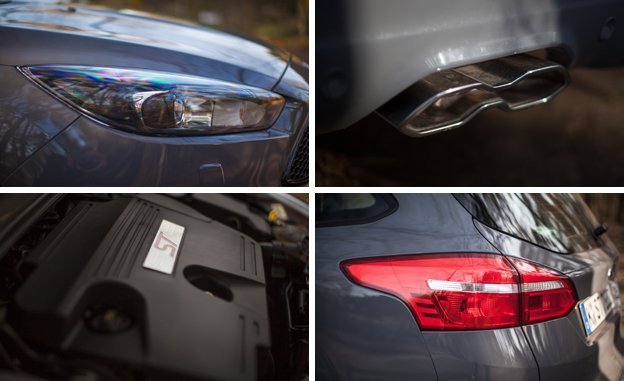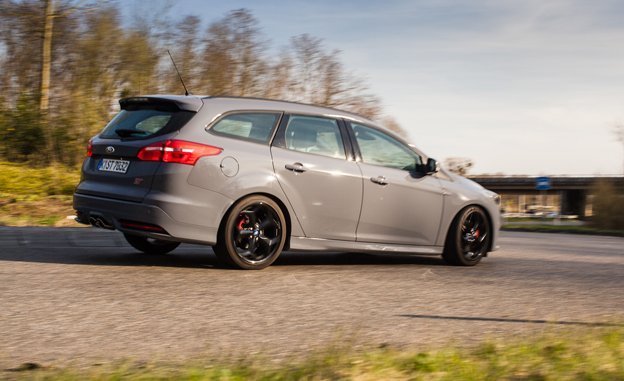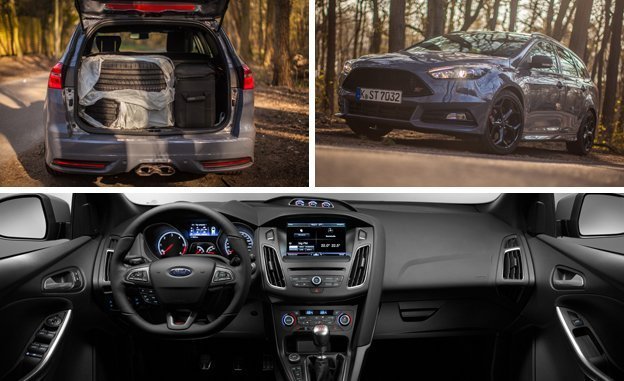 First Drive Review
First Drive Review
Like every U.S. automaker, Ford isn’t averse to wrapping itself in Old Glory when it wants to sell more product to patriotic ’Muricans. That’s why Ford F-150 advertisements feature the sort of gravelly voiceovers that make Clint Eastwood sound slightly effeminate—and usually contain more denim than the whole of Montana. Yet, despite calling Michigan home for more than 100 years, Ford also continues to deny its home market a large percentage of its global model range. And while we don’t really care if we don’t get cars like the EcoSport and the B-Max, sometimes the neglect really hurts, dammit.
As here, with the diesel version of the Focus ST sold in Europe and other parts of the world where compression ignition is taken seriously. To add some injury to that insult, the TDCi engine is also available in station-wagon form. This slight might not be on the same level as that long ago decision to deny us the Escort Cosworth, but it’s fair to say that a performance wagon with a 182-hp diesel engine and a stick shift pretty much fills the whole bingo card of stuff we’d like but can’t get. Which is why we took the first opportunity to get behind the wheel of one during a recent trip to Germany.

The view from the driver’s seat is almost identical to that in a U.S.-spec Focus ST hatchback. You sit on the same mega-grippy Recaro sports seats, grab the same chunky steering wheel, feel the same pleasingly bulbous gearchange lever, and look at the same dashboard, featuring the same trio of stuck-on supplementary dials for oil and boost pressures and oil temperature. The only real clue that something is different, other than the Euro-spec km/h, bar, and Celsius scales for the instrumentation, is the fact that the rev counter turns red just after the number “5”.
The engine is a mildly reworked version of Ford’s Euro-spec 2.0-liter four-cylinder turbo-diesel, and although it’s more than 60 horsepower adrift of its gasoline-powered sibling (with the maximum 182 horsepower arriving at a lowly 3500 rpm), it actually musters more torque: 295 lb-ft at 2000 rpm. On-paper performance figures are predictably lower, with a zero-to-60-mph time we estimate at 7.5 seconds and a 135-mph top speed (in our testing, the gas ST hits 60 in about six seconds and has a 150-mph top speed), but set against that, the TDCi has an official “combined” fuel-economy figure equivalent to 56 mpg on the optimistic Euro test cycle. If the car were to be run through the EPA ringer, we think it could top 40 mpg on the highway cycle.

There’s no surprise that the diesel lump can’t match the enthusiasm of the gasoline engine. It lacks its spark-ignited sister’s enthusiasm for revs and—despite having more torque—has far less torque steer in slower corners. But it’s smooth and brawny low down, meaning that you change gears about half as often. A derestricted stretch of autobahn confirmed that there is no point trying to push the engine past the 4000-rpm mark, where it seems to hit a slick of molasses. But tall gearing means that translates pretty much exactly to the claimed top speed in sixth—we saw an indicated 220 km/h (137 mph)—with the ST feeling stable and comfortable when driven flat-out. The engine thrums and hums when worked hard, with a sound symposer canceling out most tinkling harmonics at lower speeds.
Despite being slower than the gasoline ST, Ford hasn’t softened the diesel version as Volkswagen does with the Golf GTD. That means firm spring and damper settings, which do an excellent job of keeping the body in check when asked to make frequent directional changes. They also, however, give a harsh ride over rough surfaces, especially at higher speeds. The electrically assisted steering shares the gasoline ST’s quick rack and delivers similarly crisp front-end responses (with less power-on understeer), and the manual gearbox is just as slick as it is in the gasoline car.

Indeed, our test car’s wagon bodywork probably made more of a difference to the car’s high-speed dynamic behavior than did the diesel engine. Ford’s numbers say the wagon is 53 pounds heavier than the hatchback, but even that relatively modest increase in mass at the rear of the car is obvious, making it noticeably less willing to tighten its line on an eased throttle. Or, in other words, slightly less amusing. The plus side is a reasonably cavernous load space—33 cubic feet with the rear seats in place, 53 cubic feet with them folded.
On the basis of the car’s versatility and fuel efficiency, we’re going to describe the diesel Focus ST wagon as the most sensible performance car in the world. Or rather, in those parts of the world that are allowed to buy such a compellingly different car; we’ve no doubt that U.S. sales for a manual-shifting diesel wagon would be limited, but it’d be nice to at least be offered the choice.